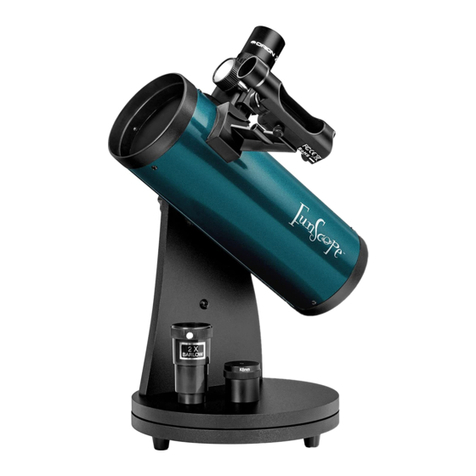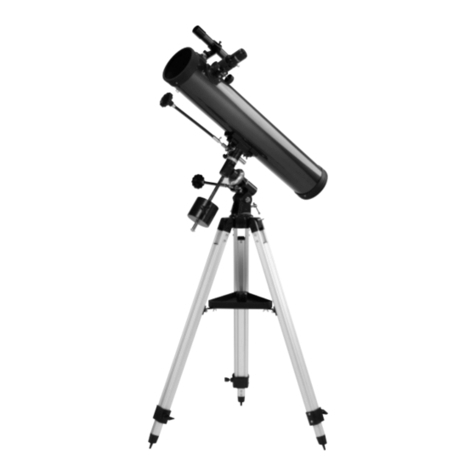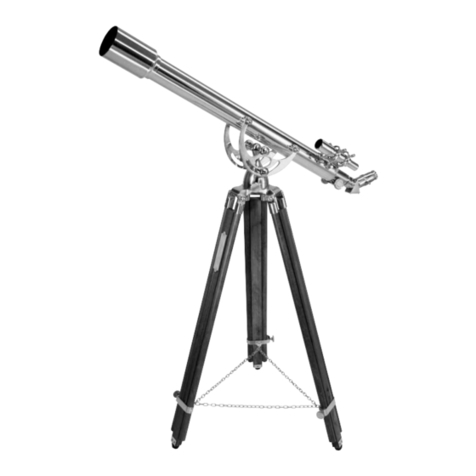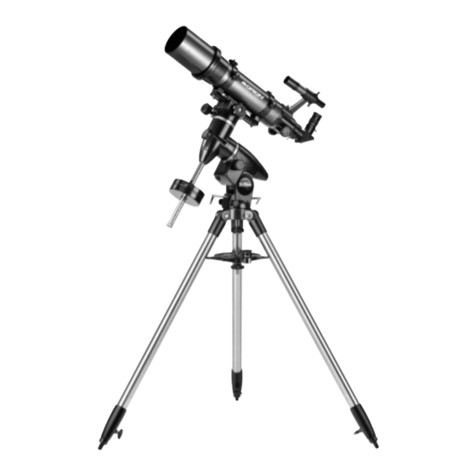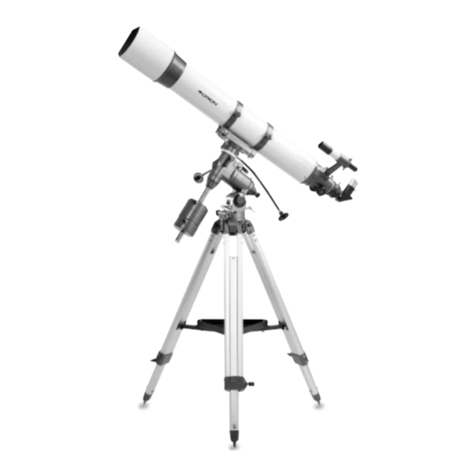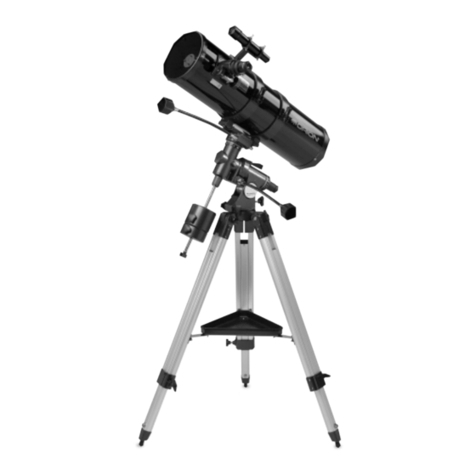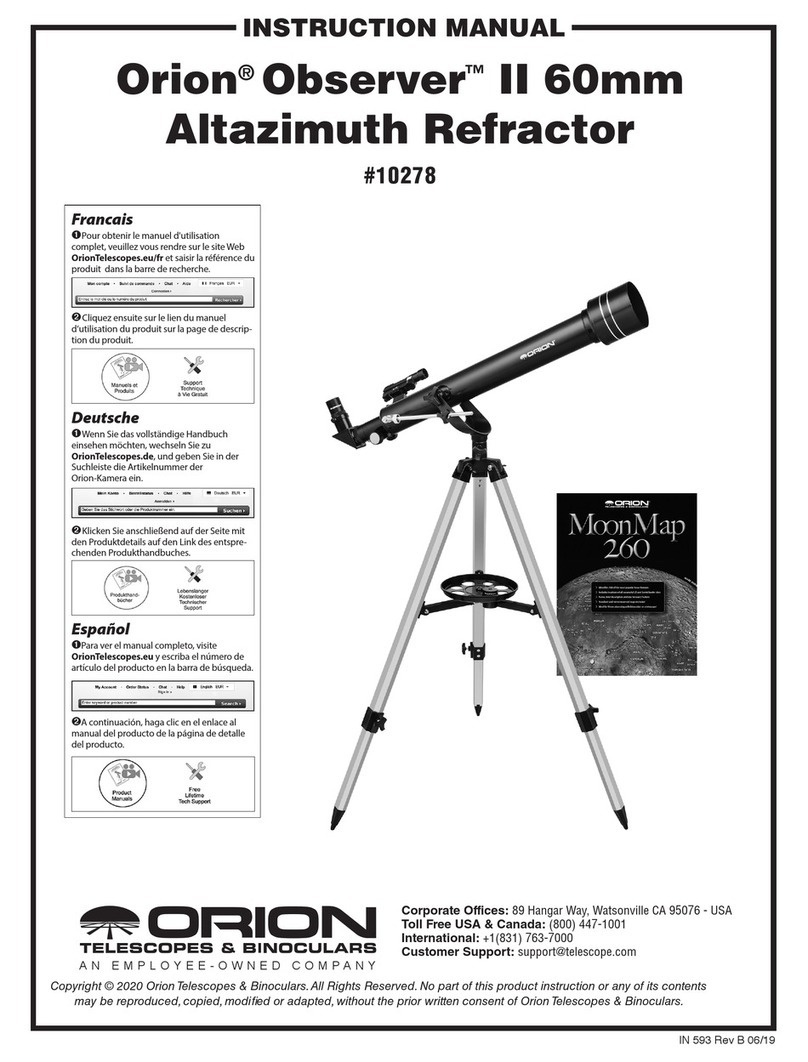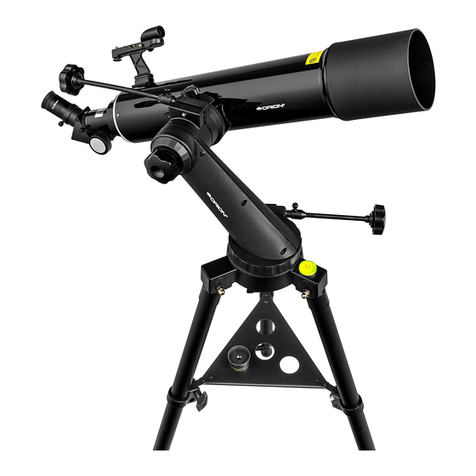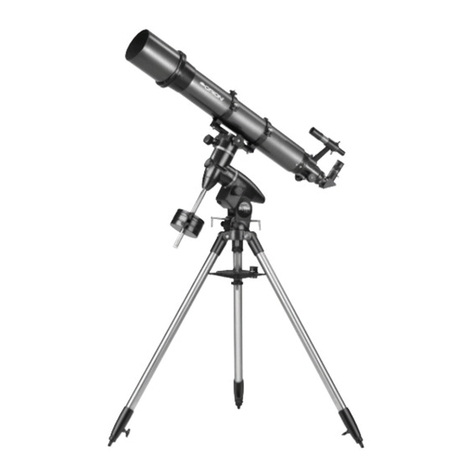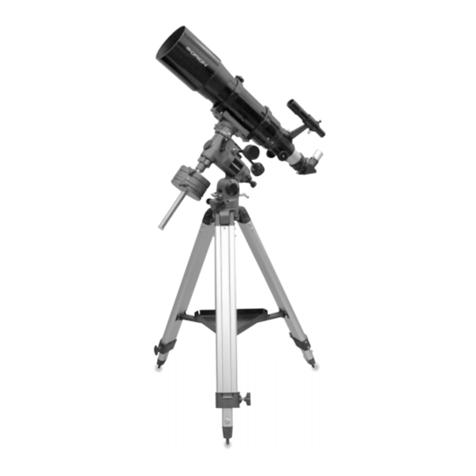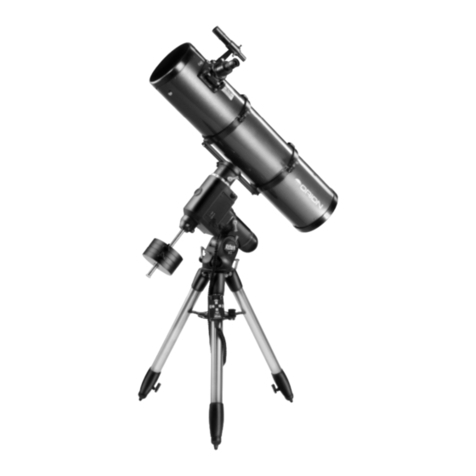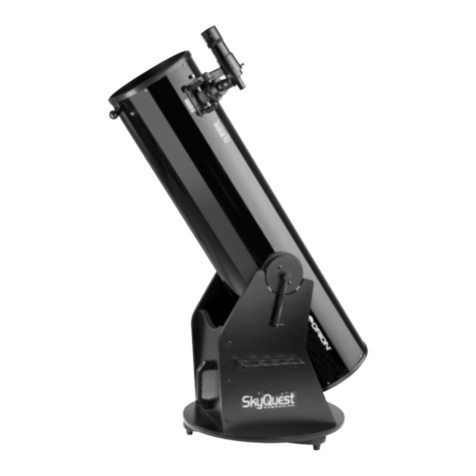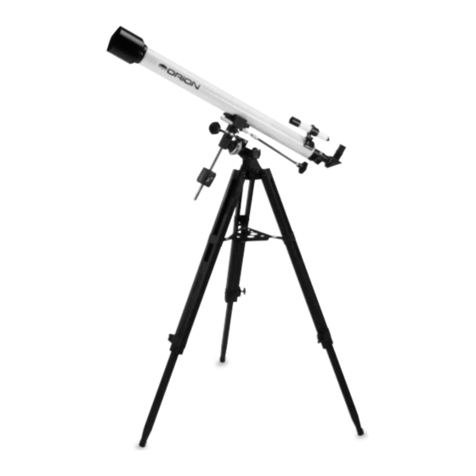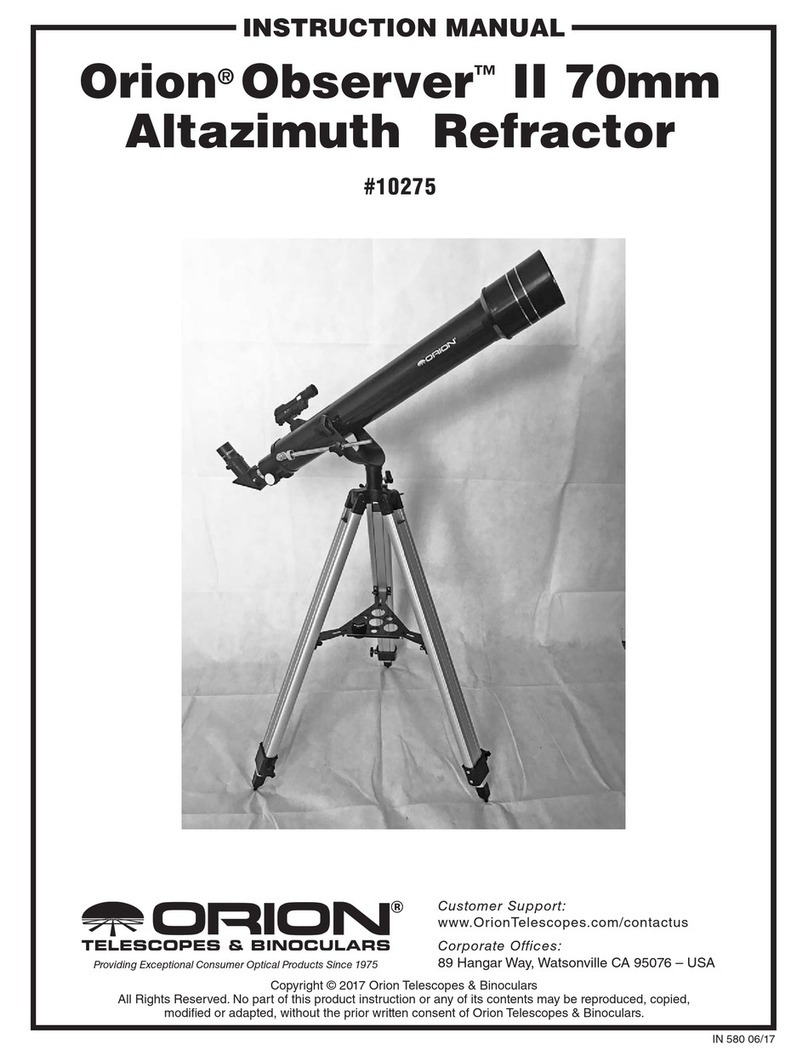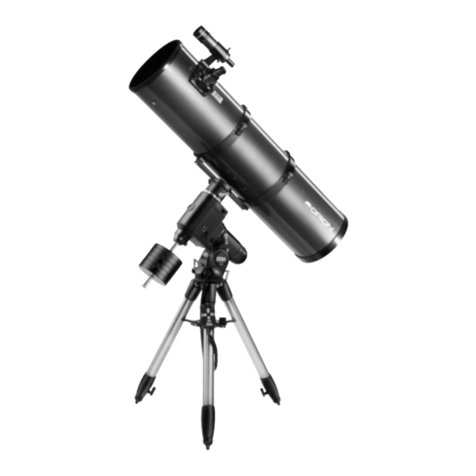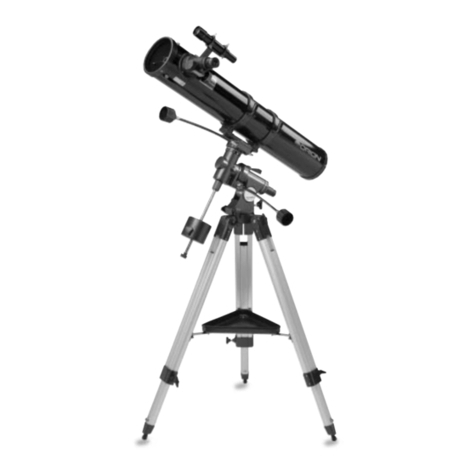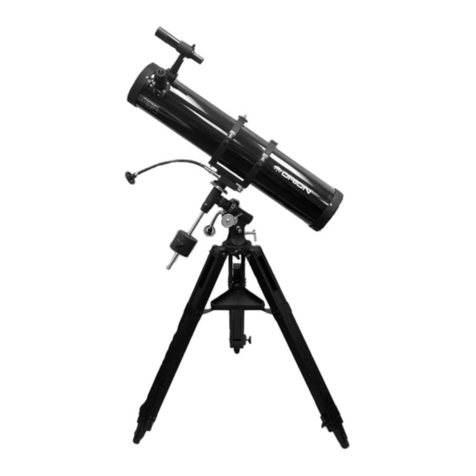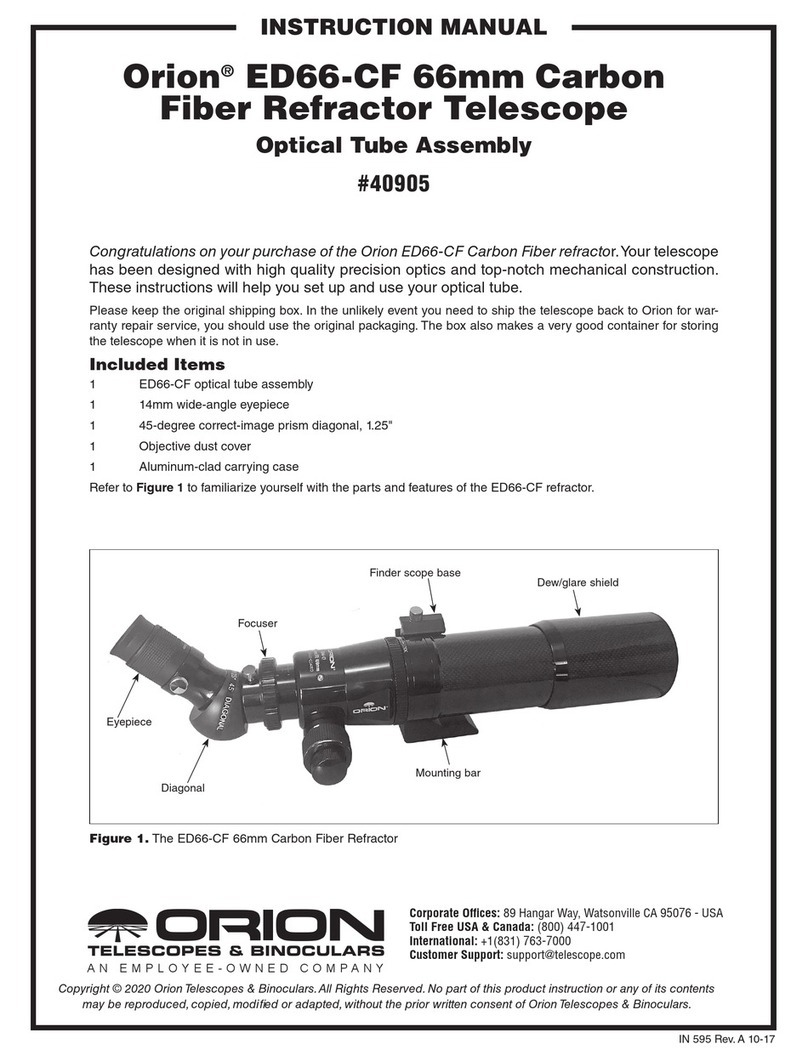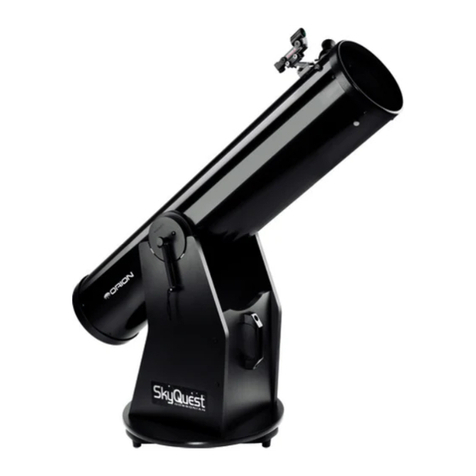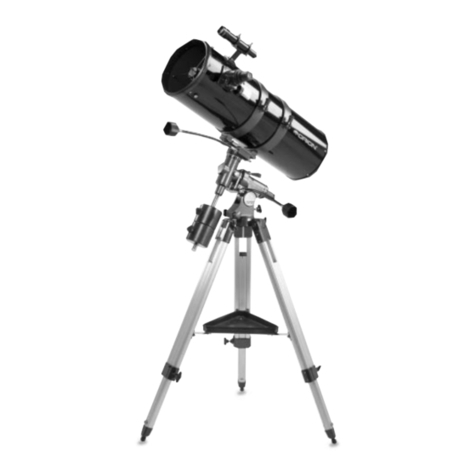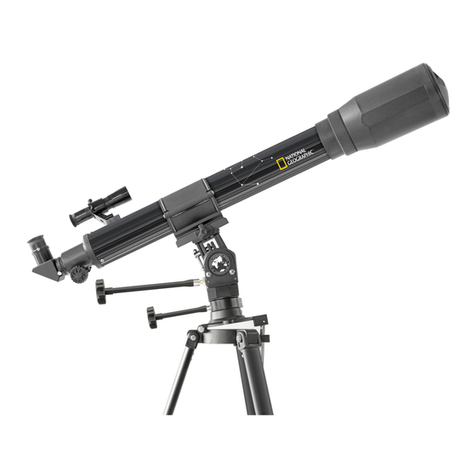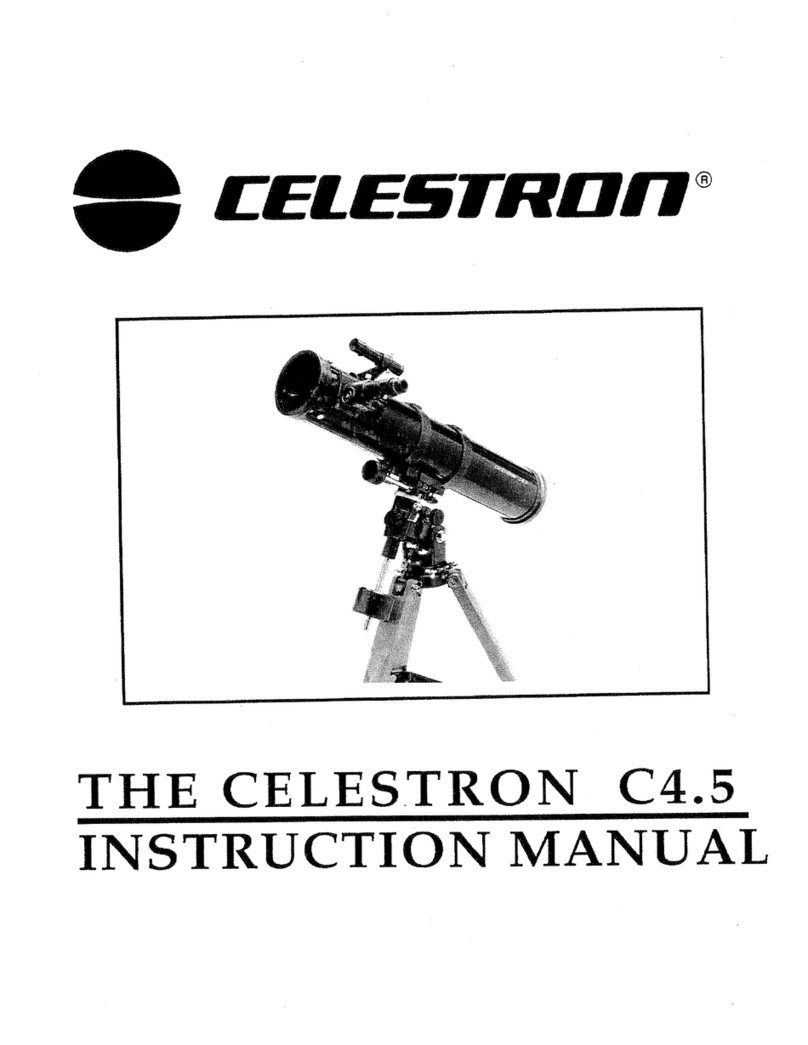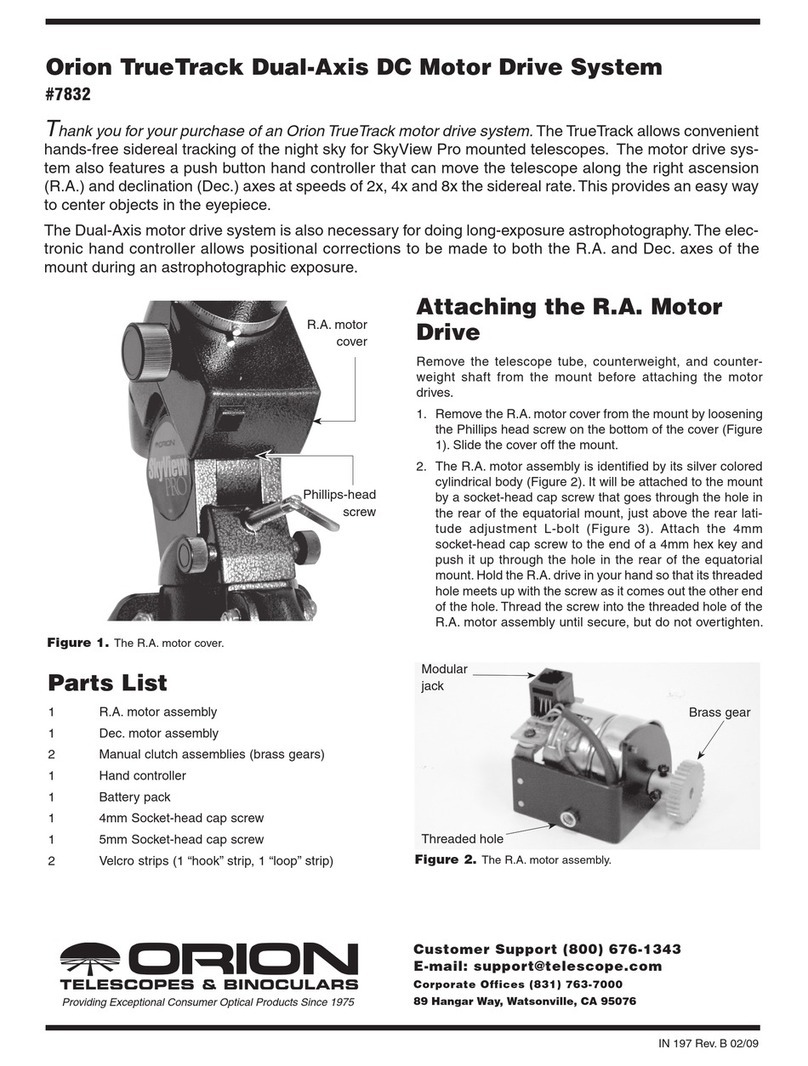6
Eyepiece Selection
Always start viewing with your lowest-power, widest-field
eyepiece.After you’ve located and looked at the object with a
low-power eyepiece, switch to a higher-power eyepiece and
see if the object looks better or worse. Keep in mind that at
higher power, an image will always be fainter and less sharp
(this is a fundamental law of optics). Many viewers use the
lowest-power eyepiece practically all the time! Naturally, high-
er magnifications are desirable for viewing some celestial
objects, but stay with low powers when searching for an
object and for extended viewing.
To calculate the power, or magnification, of a telescope,
divide the focal length of the telescope by the focal length of
the eyepiece being used:
Magnification = Telescope F.L.
Eyepiece F.L.
For example, if you’re using this telescope, which has a focal
length of 700mm, with a 25mm eyepiece, the power would be
700 ÷ 25 = 28x
We recommend having a selection of several eyepieces of
different focal lengths, so you can choose the optimal magni-
fication, brightness level, and contrast for each object and for
different observing conditions.
Useful Limit of Magnification
Every telescope has a useful limit of power of about 45x-60x
per inch of aperture (diameter of objective lens). Claims of
higher power by some telescope manufacturers are a mislead-
ing advertising gimmick and should be dismissed. The
Observer 60mm Altazimuth Refractor, with its 60mm-diameter
(2.4") objective lens, is capable of a maximum useful magnifi-
cation of about 140x. Any higher and the images will virtually
always appear very faint and fuzzy. As a general rule, if the
image you see is not crisp and steady, reduce the magnifica-
tion by switching to a longer-focal-length (lower-power)
eyepiece.Asmall but well-resolved image will show more detail
and be more rewarding than a dim, fuzzy, overmagnified one.
6. Astronomical Viewing
Let Your Eyes Dark-Adapt
Don’t expect to go from a lighted house into the darkness of the
outdoors at night and immediately see faint nebulas, galaxies,
and star clusters—or even very many stars, for that matter. Your
eyes take about 30 minutes to reach perhaps 80% of their full
dark-adapted sensitivity. Many observers notice improvements
after several hours of total darkness.As your eyes become dark-
adapted, more stars will glimmer into view and you’ll be able to
see fainter details in objects you observe with your telescope.
To see what you’re doing in the darkness, use a red-filtered
flashlight rather than a white light. Red light does not spoil
your eyes’ dark adaptation like white light does. A flashlight
with a red LED light is ideal, or you can cover the front of a
regular incandescent flashlight with red cellophane or paper.
Beware, too, that nearby porch and streetlights and car head-
lights will hinder your night vision.
“Seeing” and Transparency
Atmospheric conditions vary significantly from night to night.
“Seeing” refers to the steadiness of the Earth’s atmosphere at
a given time. In conditions of poor seeing, atmospheric turbu-
lence causes objects viewed through the telescope to “boil.” If,
when you look up at the sky with just your eyes, the stars are
twinkling noticeably, the seeing is bad and you will be limited
to viewing with low powers (bad seeing affects images at high
powers more severely). Planetary observing may also be
poor. Make sure you are not looking over buildings or any
other source of heat; that will also cause image degradation.
In conditions of good seeing, star twinkling is minimal and
images appear steady in the eyepiece. Seeing is best over-
head, worst at the horizon. Also, seeing generally gets better
after midnight, when much of the heat absorbed by the Earth
during the day has radiated off into space.
Especially important for observing faint objects is good “trans-
parency”—air free of moisture, smoke, and dust. All tend to
scatter light, which reduces an object’s brightness.Transparency
is judged by the magnitude of the faintest stars you can see with
the unaided eye (6th magnitude or fainter is desirable).
Tracking Celestial Objects
Celestial objects appear to move slowly across the sky
because of the rotation of the Earth on its polar axis. When
you observe an object through the telescope, you’ll see it drift
gradually across the field of view. To keep the object centered
in the field, give the tube a light tug or push in altitude and/or
azimuth as needed. Objects will appear to move faster at
higher magnifications, when the field of view is narrower.
How to Find Interesting Celestial Objects
To locate celestial objects with your telescope, you first need
to become reasonably familiar with the night sky. Unless you
know how to recognize the constellation Orion, for instance,
you won’t have much luck locating the Orion Nebula. A sim-
ple planisphere, or star wheel, can be a valuable tool for
learning the constellations and seeing which ones are visible
in the sky on a given night.
A good star chart or atlas can come in very handy for helping
find objects among the dizzying multitude of stars overhead.
Except for the Moon and the brighter planets, it’s pretty time-
consuming and frustrating to hunt for objects randomly,
without knowing where to look. You should have specific tar-
gets in mind before you begin looking through the eyepiece.
Start with a basic star atlas, one that shows stars no fainter
than 5th or 6th magnitude. In addition to stars, the atlas will
show the positions of a number of interesting deep-sky
objects, with different symbols representing the different
types of objects, such as galaxies, open star clusters, globu-
lar clusters, diffuse nebulas, and planetary nebulas. So, for
example, your atlas might show a globular cluster sitting just
above the lid of the “Teapot” pattern of stars in Sagittarius.
You then know to point your telescope in that direction to
home in on the cluster, which happens to be 6.9-magnitude
Messier 28 (M28).
